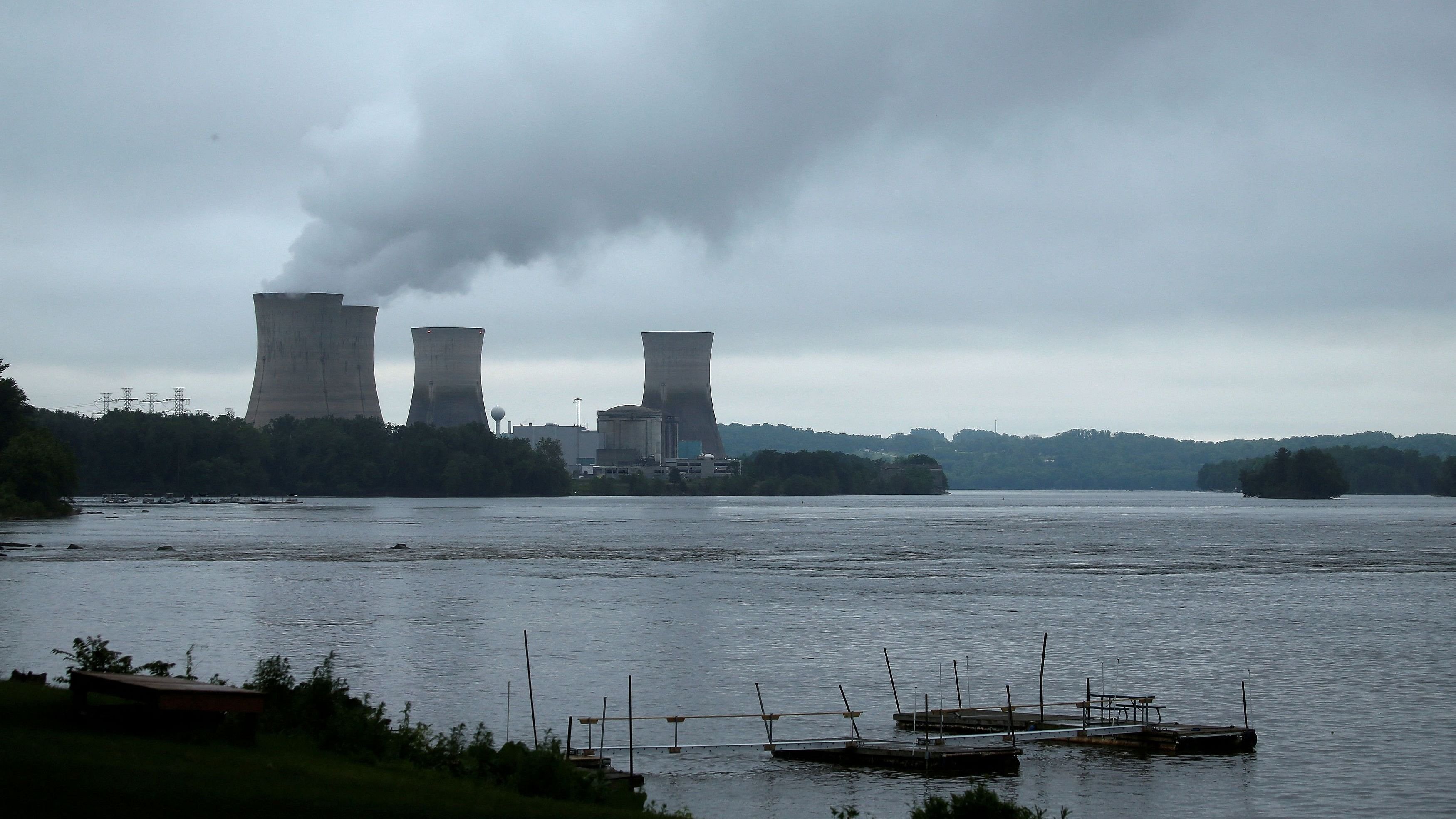
Representative image of Nuclear power plant.
Credit: Reuters File Photo
Mumbai: In a first, the Nuclear Power Corporation of India (NPCIL) will operate 220 MW capacity small nuclear plants for private players who will provide both funding and land for the project, a senior government official has said.
A development on this front is likely by this year-end or early 2025, the official told PTI.
"The funding and land for the nuclear plant will be made available by the private player but the plant will be managed by NPCIL," the official said.
With the NPCIL, a public sector enterprise under the Department of Atomic Energy, managing and operating the plant, the need to amend the Atomic Energy Act will not arise. Under the Atomic Energy Act, the nuclear energy sector is open only for government PSUs, another official said.
These 220 MW reactors will be known as 'Bharat Small Reactors' for which research is already in progress at the Bhabha Atomic Research Centre (BARC), the official said.
The Pressurised Heavy Water Reactor (PHWR) technology, which India has mastered over a period of time, is likely to be used for building the small reactors, the official said.
With small reactors, the exclusion zone can be brought down to 500 metres, the official said. Currently the exclusion zone varies from 1 to 1.5 kilometres.
The focus initially will be on energy intensive industries like steel.
Many of the private players have their own captive plants and small reactors could in future replace them, the official said.
Presenting the Union Budget in July, Finance Minister Nirmala Sitharaman announced the government will partner with the private sector to set up Bharat Small Reactors and in the research and development of small modular reactors. She did not elaborate further.
Although foreign players have approached India for building smaller reactors, the estimated price quoted by them is really high, officials pointed out.
The cost per MW for building a small modular reactor in collaboration with foreign players could go to around Rs 100 crore per megawatt. However, with PWHR technology, it can be done at Rs 16 crore per MW, another official said.
More importantly, there are very few small modular reactors that are currently operational in the world.
According to the International Atomic Energy Agency (IAEA), there are more than 80 SMR (small modular reactors) designs and concepts globally. Most of them are in various developmental stages and some are claimed as being near-term deployable.
There are currently four SMRs in advanced stages of construction in Argentina, China and Russia, and several existing and newcomer nuclear energy countries are conducting SMR research and development.
The PHWR is a technology India mastered especially after sanctions post the 1974 nuclear tests. It started from 200 MW, ramping it to 220 MW, 540 MW and then to 700 MW.
In 2017, the government gave a nod to start 10 nuclear plants of 700 MW each.
The NPCIL operates 24 nuclear power plants of which 18 are Pressurised Heavy Water Reactors. Of the 18 plants, 14 are of 220 MW capacity, two are 540 MW one is 200 MW capacity, as per the NPCIL.
It operates two 700 MW plants at Kakrapar in Gujarat.
The NPCIL also operates two Boiling Water Reactors with 160 MW each capacity and two 1000 MW Light Water Reactors.
Small Modular Reactors can be factory-built, unlike conventional nuclear reactors that are built on-site. They have a power capacity of up to 300 MW per unit.
Being a mobile and agile technology, SMRs can be set up at locations unsuitable for larger plants.
The SMRs are seen to be making a significant and meaningful contribution to the energy transition phase as part of efforts to deal with the effects of climate change.
The push for nuclear power, which is considered to be a cleaner fuel or non-fossil fuel, comes in the backdrop of India's ambitious net zero goals.
India has installed nuclear power capacity of 7,480 MW, which is expected to increase to 22,480 MW by 2031.